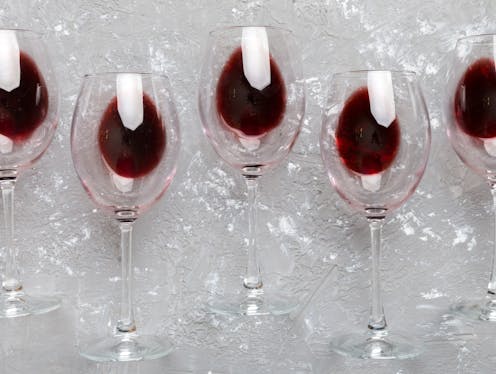
Around a thousand people are gathered in Washington DC for Wine + Culture Fest, a four-day celebration of the black wine experience featuring black winemakers, sommeliers, chefs and enthusiasts. Wine connoisseurship has a reputation for being largely white, male and European, so the idea of a black world of wine might seem novel or even improbable.
The American wine industry has not helped itself in this regard. It has been particularly criticised for ignoring consumers of colour, for enabling racism in wine workplaces, and for wishing, in the words of pioneering black wine journalist Dorothy Gaiter, to maintain “its curated image of an exclusive club”.
At the same time, we have a limited view of wine history, which has emphasised the importance of European countries and people (particularly the French). When we look instead at the history of colonialism in modern wine, it becomes clear that many different kinds of people have been involved in its creation. For an industry that is trying to become more inclusive, having a frank view of history is a necessary step.
If there is a “father” of American wine, it’s the nation’s former president and founding father, Thomas Jefferson, who was a noted lover of French wines and who experimented with planting many types of grapevines at his 5,000 acre Monticello plantation in Virginia. Jefferson is often mentioned by that state’s wine industry today in promotional materials, lending fame and credibility by association to modern-day vineyards.

There are several ironies in this narrative. One is that there is no lineage between Jefferson and modern vineyards: Jefferson failed to make wine from his grapes, and in fact the current Virginia industry has 20th-century origins. Second, while Jefferson provided the plan and the capital for vineyards, and viewed himself as a farmer, most agricultural labour on his estate was undertaken by the hundreds of people he enslaved.
Black people were thus intimately involved in the early attempts to grow grapes in Virginia, and likely developed expertise in grape cultivation. It was a similar story across the new world of wine in the 18th and 19th centuries, including Australia, New Zealand, South Africa, Chile and Argentina, though the term “new world” only came to be used to categorise wine producers in the second half of the 20th century.
For some wine professionals it is a purely geographical category, meaning “not European”, but for others it is a pejorative term, meaning mass-produced and unrefined. To shake off the suggestion that these producer countries are brash upstarts, some wine bodies have “cancelled” the term.
The Court of Master Sommeliers of America – striving to be more inclusive after several unrelated scandals concerning exam cheating and serious allegations of sexual assault – removed the term “new world” from its wine certification exams in late 2023.
However, the term actually holds the key to recognising the role of non-European people in wine history. As I show in my book, Imperial Wine, these new-world producers were all created as European imperial projects. From the 16th through 19th centuries, European settlers quickly planted grapevines in overseas lands that they conquered: the Spanish in modern-day Peru, Mexico, Chile and California; the Dutch and later the British, in South Africa; and the British in Australia, New Zealand and eastern North America.
Thomas Jefferson was not a lone prophet of wine, but rather was typical of European gentleman settlers who enjoyed horticultural experimentation and saw wine as a marker of progress and civilisation. It’s only when we look at Virginia in comparison to other British colonies that we see the common ground in land and labour arrangements, and the prevalence of vine-growing as a colonial pursuit.
We know that forced labour was one such common factor through the work of various scholars who have shown how Catholic missions exploited the labour of indigenous people in Peru and California, respectively, and from others who have shown the nefarious and long-term effects of labour exploitation in South African wine farms. Although South Africa’s population is 80% black, only a tiny percentage of its wineries (and land) are black-owned.
Getting real about wine
Knowing how central colonialism and forced labour was in wine history helps us to understand socio-economic inequities that persist to this day, and their impact on consumer markets. If Jefferson’s enslaved black workers were cultivating grapes in the 18th century, just as indigenous Americans were toiling on Franciscan missions in what is now California, we have evidence of the long and deep association American people of colour have with wine.
Without this global historical context, black wine-lovers might appear to be parvenus who are adopting (or even imitating) a culture that has no place in black history. After all, in the US, only an estimated 1% of wineries are black-owned; Professor Monique Bell, author of the 2021 report Terroir Noir, cites Woburn Winery in Virginia as the first black-owned winery in the country, and it opened in 1940.
If this is “re-writing” wine history, that’s nothing new: the French have been doing it for over a century. For many readers, France might be the country most readily associated with wine. France is, after all, the second largest wine producer by volume after Italy, and wine has a prominent role in French gastronomic culture and exports.
However, as numerous historians have shown, France’s reputation as the pre-eminent wine producer has not happened by accident. It is thanks to many deliberate attempts by producers, trade bodies and governments to portray French wine as representative of France itself. This has happened by drawing on certain aspects of French wine history and de-emphasising others.
The same can be true of the wine history of many countries. We can choose to focus on the individuals who launched vineyards, and ignore those who worked in them. But if we do the opposite, by recognising the colonial history of wine, we gain a much broader, more inclusive and more accurate understanding of who “belongs” in the world of wine.
Jennifer Regan-Lefebvre does not work for, consult, own shares in or receive funding from any company or organisation that would benefit from this article, and has disclosed no relevant affiliations beyond their academic appointment.
This article was originally published on The Conversation. Read the original article.







